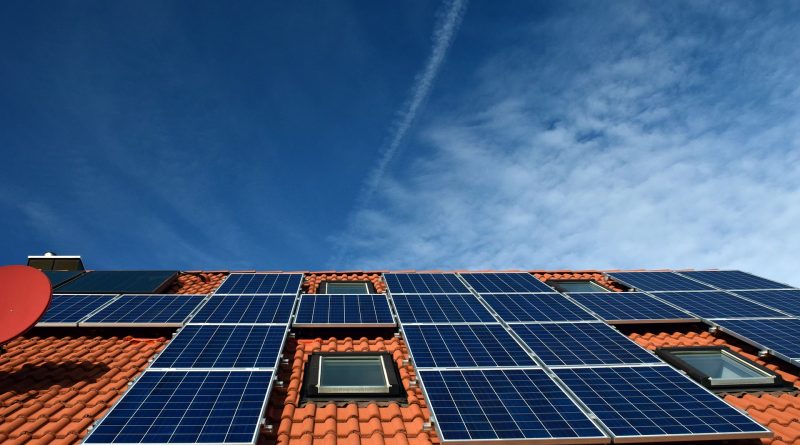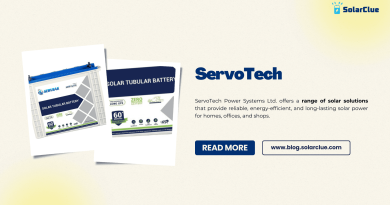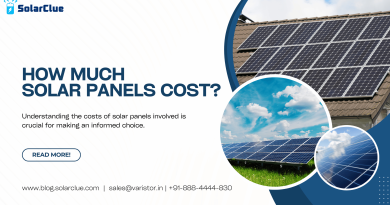Solar Installation Cost 1 Acre: Affordable Solutions
Solar energy is rapidly becoming a popular and viable alternative to traditional sources of electricity. With its numerous environmental and economic benefits, solar power has gained momentum across the globe. One of the primary considerations when it comes to solar installations is the cost. This blog aims to explore the expenses associated with installing solar panels on an acre of land, providing insights into the factors that influence the overall cost and potential return on investment.
Table of Contents
Factors Influencing the Cost of Solar Installation
The cost of a solar installation on an acre of land can vary widely depending on several factors. It is important to take these factors into account when determining the overall expenses involved in harnessing solar power.
1. Type of Solar System
Choosing the type of solar system is the first decision that will influence the cost. It can range from the standard grid-tied solar system to the more complex off-grid options. Grid-tied systems, which are directly connected to the electrical grid, tend to be more affordable due to their simplicity. On the other hand, off-grid systems require additional components like batteries and inverters, making them more expensive.
2. Solar Panel Efficiency
The efficiency of solar panels plays a crucial role in the overall cost. Higher-efficiency panels can generate more electricity per square meter, reducing the number of panels required for a given energy output. While more efficient panels may have a higher initial cost, the long-term financial benefits can outweigh the initial investment. Therefore, the choice of solar panel technology should be carefully considered based on the desired energy output and budget.
3. Land Preparation
Preparing the land for solar installation is another important consideration. Is the designated area already suitable for solar panels, or does it require significant groundwork? Factors such as soil quality, obstructions like trees or buildings, and the need for leveling or grading can impact the cost. In some cases, additional expenses may arise if the land needs to be cleared of any existing structures or vegetation.
4. Mounting Systems
The choice of mounting system is key to ensuring the longevity and efficiency of the solar installation. Roof-mounted systems are usually cheaper since they utilize existing structures, such as building roofs, and have lower material and labor costs. Ground-mounted systems, while more expensive, offer greater flexibility in terms of panel positioning and maintenance access. The specific requirements of the land and the desired tilt and orientation of the panels will determine the appropriate mounting system and consequent cost.
The Cost Breakdown
Now that we have explored the main factors influencing the cost, it is essential to understand how these expenses are typically distributed. Let’s delve into the different elements that make up the cost of a solar installation.
1. Solar Panels
Solar panels constitute a significant portion of the overall cost. The prices of solar panels have been steadily decreasing in recent years, making them more affordable. On average, solar panels can range from $200 to $400 per panel, depending on the brand and efficiency rating. Based on the desired energy output, the number of panels required will vary. It is advisable to consult with a solar installation provider to determine the appropriate panel quantity for the desired acreage.
2. Inverters
Inverters are essential components that convert the direct current (DC) generated by solar panels into alternating current (AC) usable by electric grids. The cost of inverters is typically calculated per kilowatt (kW) and can range from $1,000 to $3,000 per kW. The number of inverters needed depends on the size and design of the solar installation.
3. Mounting Systems and Racking
The cost of mounting systems varies based on the type, design, and location of the solar panels. Roof-mounted systems are generally less expensive, ranging from $0.15 to $0.25 per watt, while ground-mounted systems can cost between $0.25 and $0.35 per watt. Racking, the structure that supports the panels, is another expense to consider, usually costing around $0.10 to $0.25 per watt.
4. Balance of System (BoS) Components
BoS components include wiring, junction boxes, breakers, and monitoring systems. These items are necessary to connect the solar panels and ensure safety and functionality. On average, BoS components account for approximately 10-15% of the total system cost.
Return on Investment (ROI)
While the initial cost of a solar installation may seem significant, it is crucial to consider the return on investment (ROI) that solar power can offer. Solar systems have the potential to significantly reduce or eliminate monthly electricity bills, leading to long-term savings. Additionally, some regions and countries provide financial incentives and tax credits for adopting solar power, further enhancing the ROI.
Beyond financial benefits, solar installations contribute to environmental sustainability by reducing carbon emissions and reliance on fossil fuels. This aspect adds to the overall value and positive impact of going solar.
Conclusion
Embark on a journey to affordable clean energy with SolarClue®—your dedicated guide for solar installations on 1 acre. Understand the cost-effective benefits and environmental impact of transitioning to solar power on a larger scale. Assess factors influencing installation costs, optimize your solar setup with expert assistance, and choose the right capacity for your acreage. SolarClue® helps navigate financing options, subsidies, and incentives, ensuring affordability for larger projects. Obtain permits smoothly, learn maintenance insights, and stay informed about local market trends for maximizing returns. Join our community, share experiences, and transition to cleaner, sustainable energy with SolarClue®. Start your solar journey on 1 acre today!
Frequently Asked Questions
SolarClue® helps landowners understand the cost-effective benefits and environmental impact of adopting solar energy on larger scales, emphasizing reduced electricity costs, sustainability, and long-term savings.
SolarClue® assists landowners by explaining factors influencing solar installation costs for 1 acre, helping them assess and optimize these factors for an affordable and efficient solution.
SolarClue® guides landowners in choosing the right capacity and type of solar installations by considering acreage, providing a customized solution that fits their budget, and promotes clean energy adoption.
SolarClue® provides resources to help landowners explore financing options, subsidies, and incentives for larger solar projects, making their investment more affordable and financially viable.
SolarClue® offers insights into maintenance requirements for larger solar installations, educating landowners on caring for their setups for long-term efficiency and affordability.
SolarClue® supports landowners by providing information on the regulatory landscape, assisting in obtaining necessary permits for larger solar installations, ensuring compliance with local guidelines, and facilitating a smooth process.
SolarClue® provides information on potential energy savings and ROI, assisting landowners with calculations and strategies to maximize the benefits of investing in solar installations for 1 acre.
SolarClue® fosters a community where landowners share experiences with larger solar installations, creating a supportive space for learning, troubleshooting, and advice to enhance the overall clean energy transition.
SolarClue® provides additional tips and best practices to landowners, ensuring they make well-informed decisions and optimize their solar installation investments for maximum affordability, efficiency, and sustainability on 1 acre.
SolarClue® stays updated on the latest trends and technological advancements in larger-scale solar projects, providing landowners with cutting-edge information to make informed decisions about their solar investments.




